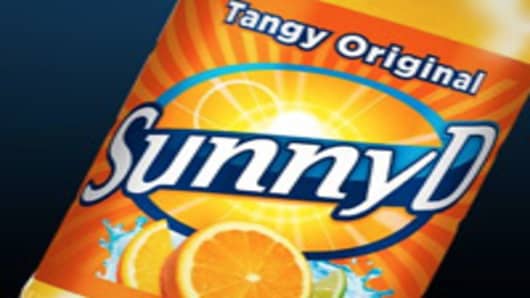It always bothers me when I hear news reports citing the latest inflation datausing the words “excluding volatile food and energy prices.” With the exception of the recession-driven swoon in 2008-09, the aggregate food and energy prices haven’t been very “volatile” in about eight years – they have moved aggressively in just one direction: up! This has virtually unraveled the traditional profit model for the food industry – and challenged consumers and retailers at the same time.
Since 2004, the weighted average cost of the commodities that my companybuys – such as apple juice, resin for bottles, sweeteners, energy for transportation and production - has increased 78%. In contrast, over the previous 15 years, the aggregate cost of those commodities did not change more than a few percent.
We went 16 years (1989-2005) without ever changing the price of our products to retailers and were able to consistently increase earnings through modest volume growth and continual efficiency improvements. That was a common profit model in the food industry for an entire generation of food marketers.
Since 2004, though, we have had to increase our prices five times. And we weren’t alone – with each segment of the food industry being impacted by a different blend of commodities but all of them moving in the same price direction – up.
This has had a profound effect on consumers and retailers.
Consumers have been squeezed – and it shows in their purchasing behavior. In our business, each 1% increase in price typically reduces consumption by 1%. After five price increases totaling more than 30% over 8 years, we could face the prospect of producing almost 1/3 less volume. Some of that lost consumption is ultimately recovered but we have to earn it back -- through strong marketing, merchandising and innovation. Those activities have historically built incremental business but now they are filling the hole created by higher pricing. And without volume increases it is hard to generate incremental manufacturing efficiencies. So the profit model that was honed during the stable 90’s and early 2000’s no longer works.
This also puts pressure on retailers. Many of them are starved for volume growth to offset their higher operating costs. As the CEO of a major retailer told me, retailers get their efficiencies from tonnage, not dollars. Yet higher prices are reducing total consumption and even reducing the number of store visits by consumers. Some retailers have fared better than others – particularly the value oriented channels like dollar stores and club stores. But, overall, the industry is challenged. A new model has to emerge – one that enables volume growth in the face of higher prices.
An added complexity has been that commodities have increased unevenly and have been very hard to predict. Just when it seemed like a commodity couldn’t go any higher, it would soar. So, dramatic mid-year increases in the cost of a key commodity would either erode our profits or we would have to slash marketing and merchandising spending – further stressing volume growth.
As a result, we have gotten much more sophisticated in our hedging strategies – striving to achieve certainty in our costs for extended periods of time so that we can deliver consistent prices and maintain strong marketing and merchandising programs to drive volume. But that is not easy. While numerous commodities have readily available hedging mechanisms, not all do. PET resin and apple juice are virtually impossible to hedge. Until recently, we could not hedge HDPE resin. Those commodities that can be hedged require tremendous expertise – expertise that not all manufacturers can afford.
Additionally, audit committees and lenders are very nervous about complex hedging programs – and require rigorous review of the strategies and positions on a regular basis. And, even when we did all that properly, we found ourselves with an account at MF Global(and an outstanding letter of credit) when their trading activities drove them into bankruptcy.
Numerous food manufacturers – including us – also respond to the uneven increases in commodities by reformulating our products to take advantage of the relative price differences of the commodities (e.g. replacing plastic with cardboard or switching from one sweetener to another) or downsizing packages to hit key price points. While this can help improve profits, it also drains significant technical resources that would otherwise be engaged in business building activities.
When all is said and done, one thing is clear: The profit model in the food industry has changed because of the soaring costs of commodities. Now you need to have pricing power – and the ability to drive volume growth in the face of higher prices. That isn’t easy.
Tune In:
Watch CNBC all day Friday, April 13th for “Food Fight” special reports about the impact of food inflation.
Billy Cyr is the President & CEO of the Sunny Delight Beverages Co., a manufacturer and marketer of juices, juice drinks and flavored waters under the Sunny Delight, Fruit2O, Veryfine, FruitSimple, Bossa Nova, Elations and Crystal Light brand names. Billy led the carve-out of Sunny Delight from Procter & Gamble in 2004 with the backing of the private equity firm J.W. Childs Associates.
CNBC and YPO (Young Presidents’ Organization) have formed an exclusive editorial partnership, consisting of regional “Chief Executive Networks” in the Americas, EMEA and Asia-Pacific. These “Chief Executives Networks” are made up of a sample of YPO’s unrivaled global network of 19,000 top executives from 110 countries who are on the frontlines of the economy. The opinions of “Chief Executive Network” members are solely their own and do not reflect the opinions of YPO as a whole or CNBC.


